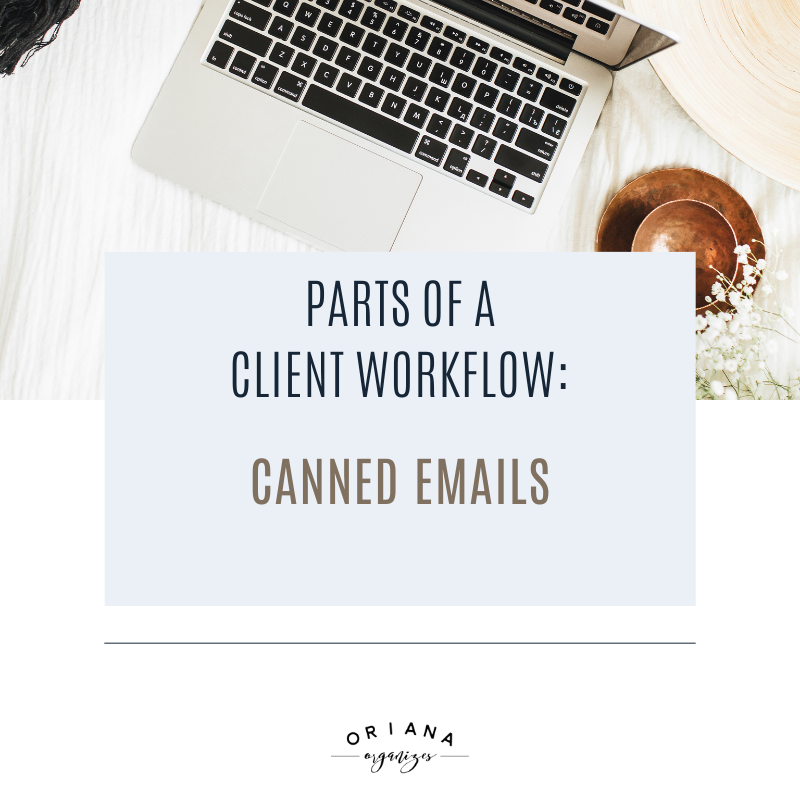How to Avoid the Awkwardness of Asking for Money
Avoid the Awkwardness of Not Getting Paid
Notice I said “PAID”....not the rhyming word that starts with the letter L. Today we’re talking about what happens when something goes sideways with a client and you’re not getting your hard-earned payment from them.
Let’s be real for a minute: Asking anyone for money is awkward, no matter who you are. Unless you’re the 1% that can pull that off without feeling gross about it.
But what do you do when your client isn’t paying their outstanding invoices?
**In walks the payment automation, looking all confident and dapper.
Set It and Forget It
Create a set of canned emails once. Then set them to go out at a cadence of your choice to both your lead and your client. This will save you hours of discomfort and heartburn.
I’ve even done it in a corporate setting where I found myself having to send out the same emails, answering the same questions, or providing the same information, repeatedly.
So how do we do this? Start at the beginning of your client workflow process. Think about how you’re going to communicate with them within your first interaction. Watch this…
Create the outline of the following emails:
Auto-responder email to your lead
Follow up to schedule a call
Scheduler confirmation
Scheduler reminders (we’ll talk about how many and why)
Not a great fit/referral
These are your Inquiry Series Canned Emails. These first few interactions with your lead will set the tone for the rest of your relationship with them. You can add your tone to each email, you can use artwork, emojis, or animated gifs…..basically, you can make as much or as little of an impact on your lead’s mind as you want.
So where does this line up with avoiding the awkward, gross feeling when your invoices are late?
Take this same practice and apply it to the next series of emails. You’ll write these once but with a more serious, yet graceful, tone. Because your first set of communication emails match your brand voice and provide tons of value, your client knows you’re serious yet fun. But at the end of the day, you need to get PAID.
BONUS: If you’re a Dubsado user, you don’t need to touch these emails hardly at all. They’re already composed within the platform for you.
There are 3 steps to this piece.
Make sure your payment plans are set up in Dubsado.
This will ensure you know exactly how much a client will pay, and at what cadence throughout the project.Get comfortable with when you’re going to let Dubsado remind your clients that their payment is due.
This means: How far before their invoice due date will you remind them to pay you?Find and tweak emails titled “Payment Reminder”
These emails are direct and to the point. They tell the client that now they owe you money and it’s only uncomfortable for them.
I say it’s only uncomfortable for them because you didn’t have to draft that email and squirm in your seat before closing your eyes and clicking “Send”. Dubsado sent it on your behalf!
Where Are These Emails in Dubsado?
Dubsado comes with what I like to call “starting point” canned emails. They provide the basic structure of possible lead and client communications. But they only provide these 3 payment emails to start you out:
Payment Reminder - Upcoming Payment
Payment Reminder - Due Today
Payment Reminder - Past Due
When you log into your Dubsado account, go to the menu on the left and click Templates > Canned Emails.
Under the Edit Templates dropdown button, you’ll see where it says Filter. Click there and type “payment”.
Now you’re free to click into each Payment Reminder email and add any terms or conditions or reminders in there. I like to add that if a payment isn’t made within a certain number of days, their project will be placed on hold and their due date will be in jeopardy.
Important Payment Email Fields
Make sure to keep the following fields within your “Payment Reminder” reminder emails. It’s best to understand what each field does so that you know why NOT to remove them from your canned emails.
{{scheduledPayment | paymentAmountDue : job.invoice.schedule : job.invoice}}
This field is pulled from the client’s invoice that was attached to their proposal and contract. Dubsado will drop the right amount in there for you because we already set it up once.{{scheduledPayment | paymentDueDate : job}}
Remember up there 👆🏼where I said to be sure that your payment plans are set up in Dubsado? This is why. This field is calculated from the payment plan settings and the client’s signed agreement date.{{job | invoiceLink}}
Make it super EASY for your client to pay you. By using this link you’re giving them almost zero reason to not be able to find and pay the invoice. All they have to do is click the link and it takes them directly to their overdue invoice.
The Best Part
Setting this up once will alleviate that burden of feeling gross when a client owes you money. It’s like making dinner in a slow cooker….again, and again, and again, and again. The best part? You can even be sleeping 😴 and these emails will still be sent out to your clients, helping you get paid!
Are you ready to set up Dubsado to automate your service business?
Feeling overwhelmed by Dubsado and just need help setting it up?


















